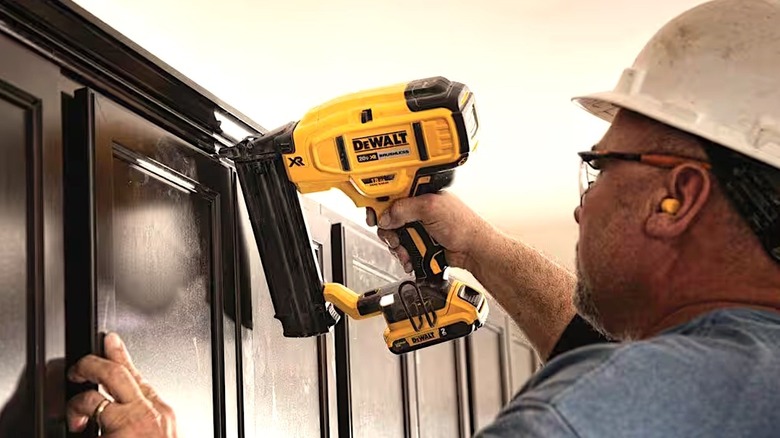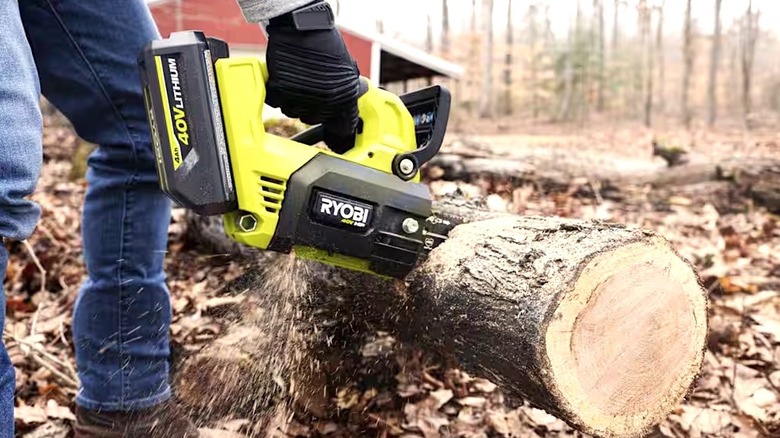
With virtually every major power tool manufacturer now utilizing Lithium-Ion technology to run the bulk of their handheld tools, it has never been more important to research what batteries are required to power your devices. It's also likely that much of the debate will be focused on the device's voltage requirements, with power tool makers offering handheld tools in the 18V, 20V, and 40V ranges, as well as some larger devices that push the power output up to 80V.
But once you've properly considered
a device's power needs, you'll likely notice that there are variations even within those voltage ranges. Primarily, you'll notice that most Lithium-Ion battery packs are also marked with the letters Ah. Those letters are typically preceded by a numbered rating that can range anywhere between 1 Ah to 500 Ah or more, depending on the device's power needs.
If you're not familiar with the Ah designation, the letters stand for Ampere Hours, which refers to a battery's charging capacity and how much current it can deliver to a device over a fixed period of time. The highest amp-hour ratings are typically reserved for things like cars and electric vehicles, but higher Ah batteries for power tools and lawn equipment do exist, and are often rated between 2 Ah and 4 Ah.
Read more: 5 Non-Ryobi Products That Work With Ryobi Batteries
2.0 Ah Batteries

We'll start with 2 Ah batteries, as they are the lower-rated of the two. Ampere hours are determined by the amps delivered over a 60-minute period. A 2 Ah battery can hold 2 amps of power on a full charge, meaning it can deliver those amps to a device over the course of one hour.
In general, 2 Ah batteries are lighter and easier to handle than many of their higher Ah counterparts. That makes them ideal for use in smaller handheld power tools manufactured with mobility in mind. That includes devices such as electric screwdrivers, drills, and nail guns, among many others. Given their size and power capabilities, 2 Ah are thought to be better suited to tools that do not usually see extended periods of continuous usage. The power packs may require shorter charging times than some of their counterparts as well, though that will depend more on the amps provided by your charger.
Not surprisingly, 2 Ah batteries are usually priced lower than those with higher Ah ratings, though that can also vary by manufacturer. And in case there's any question, the batteries can be used with most 18V, 20V, and 40V power tools. However, the higher voltage devices like those in Ryobi's popular 40V lineup may drain their power faster.
4.0 Ah Batteries

Moving on to batteries bearing the 4 Ah designation, you have surely ascertained at this point that they are designed to provide more runtime to the devices they are powering compared to those rated at 2 Ah. In fact, they should be able to power a tool for approximately twice as long, though runtimes can vary depending on the device.
If you're curious about the general output of 4 Ah batteries, they are designed to produce 4 amps of power over the course of a single hour. Like the 2 Ah power packs, 4 Ah batteries can also be used to power tools in the 18V, 20V, and 40V voltage range. Not surprisingly, 4 Ah batteries are often bigger in build than 2 Ah models, and they are more frequently used to power larger devices tabbed for heavy-duty jobs that require more extended periods of usage. That list includes tools like blowers, saws, sanders, and impact wrenches, among various other devices.
Despite the extended on-the-job life, you might be surprised to learn that 4 Ah batteries do not necessarily require longer recharge times. As we previously noted, however, charging times for 2 Ah batteries and 4 Ah batteries can vary depending on the charger being used, with a 4 Ah battery likely charging slower on a 2 Ah charger, and the latter likely charging faster on a 4 Ah charger. In general, 4 Ah batteries are also more expensive than their 2 Ah counterparts, though that also varies by brand.
Want the latest in tech and auto trends? Subscribe to our free newsletter for the latest headlines, expert guides, and how-to tips, one email at a time.
Read the original article on SlashGear.










